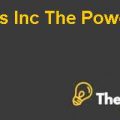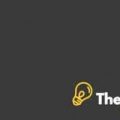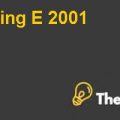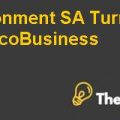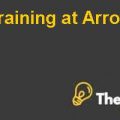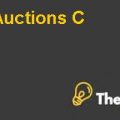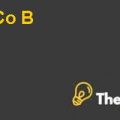Berkshire Partners: Bidding for Carter’s Case Study Solution
Introduction
The Carter is an apparel company in the United States. It has long history of 136 years in the market. It was founded in 1865, and today it has become a one leading apparel company in the market. Meanwhile, the company has been producing the clothing’s for the babies (new born) and young children, and has mainly five product segments baby sleepwear, young children sleepwear, baby play wear and baby sleep wear, and last the product segment of the new born babies. However, the company provides various clothing’s for the baby (new born) to the six years.
Meanwhile, the company had struggled in the market, to survive when some of its new product line, could not meet with the expectations of the customers. Indeed, its product line swimwear, nightwear, and the underwear segment performed poorly in the market.Along with the some decorative and hard suite, such as zippers and cut bow as well. Meanwhile, at that company was owned by the insurance company, Mutual Benefit life and Wesray Capital Corp.However, Frederick J. Rowan joined the company as CEO, then it went back to its original product line.
Furthermore, the company has long history in the United States, and it did not want to outsource its production, since almost all of its competitors in the market has outsourced their production. Therefore, the complications had increased for the company, due to increasing labor costs, materials costs and other input costs. Thus, company opened its first outsource production unit outside of United States. On the other hand, it can be determined that, company at that stage was acquired by the Invest Corp.That has investment in many companies, throughout the USA and Europe.
Furthermore, it can be determined that, company has continued good growth in the market after many changes into its production line.Outsourcing of production, and introduction of new soft and core products that well perceived by the customers. However, on the other side, Invest Corp was planning to exist, and get back its investment from the company. Since, they had two options one to offer Initial public offerings (IPO), by listing the company on the stock exchange, or conducting an auction among the private investment companies.
Indeed, many companies participated, in the bidding process to bid for the Carter. Meanwhile, it was clear that Carter Company was growing at good rate in the market and has good potential. Since, it was operating in a good industry that was attractive to the investors. Consequently, the Berkshire Partners a privately founded equity firm, also took part in the bidding process of the Carter. Indeed, the Berkshire has basic understanding of company and industry. But, it was busy in collecting data of the company, valuing the company and formulating the capitals structure of the company. It was concern for the company to value the Carter in given situations, and by making some assumptions.
Underlying Assumptions
- The beta of the company was taken as the average of companies’ comparable. Meanwhile, it was much feasible to get average of other market competitors, or the industrial average then making an assumption.
- The market premium was assumed 6% after considering the declining interest rate, US Treasury, 10-year US Bond yield and LIBOR as well.
- Cost of Debt was calculated through the =Risk-free + Premium*(1-tax)
- The growth was assumed to be 5%, in order to come with the terminal value of the company.
- Amortization and Depreciation was calculated through, the amortization and depreciation of given year, and divided by the total sales. Consequently, we get the average of the depreciation as compared to the total net sales, and applied that average to upcoming year’s sales to get depreciation.
- The interest expenses was also calculated, by getting the historical interest expense, as compared to the total net sales. See Spreadsheet.
- Terminal value is calculated by last year cash flow, divided by WACC minus growth rate.
Value of the Carter
The Carter Company has been operating, in the fast growing industry of the apparel in the United States. Indeed, the company is operating at the good growth rate, as compared to its competitors in the market. Indeed, if we value the company’s assets then the free cash flows method is much better, to approach the value of the firm. Since, the free cash flows refers, to the free cash that is available to the company for the investment. Indeed, the unlevered assets means that debt is not considered while valuing the company.
Furthermore, it can be determined that, market has risk free rate of 5.2% that was declined along with the LIBOR, and there is corporate tax rate of 35%. Meanwhile, we calculated the cost of equity 12%, and cost of debt 7%. However, it can be determined that, capital structure of the Carter is highly leveraged, which makes it more risky, as compared other comparable company with balanced capital structure. Because, assume that company is highly leveraged, and is also listed on the stock exchange market..............
This is just a sample partial work. Please place the order on the website to get your own originally done case solution.

